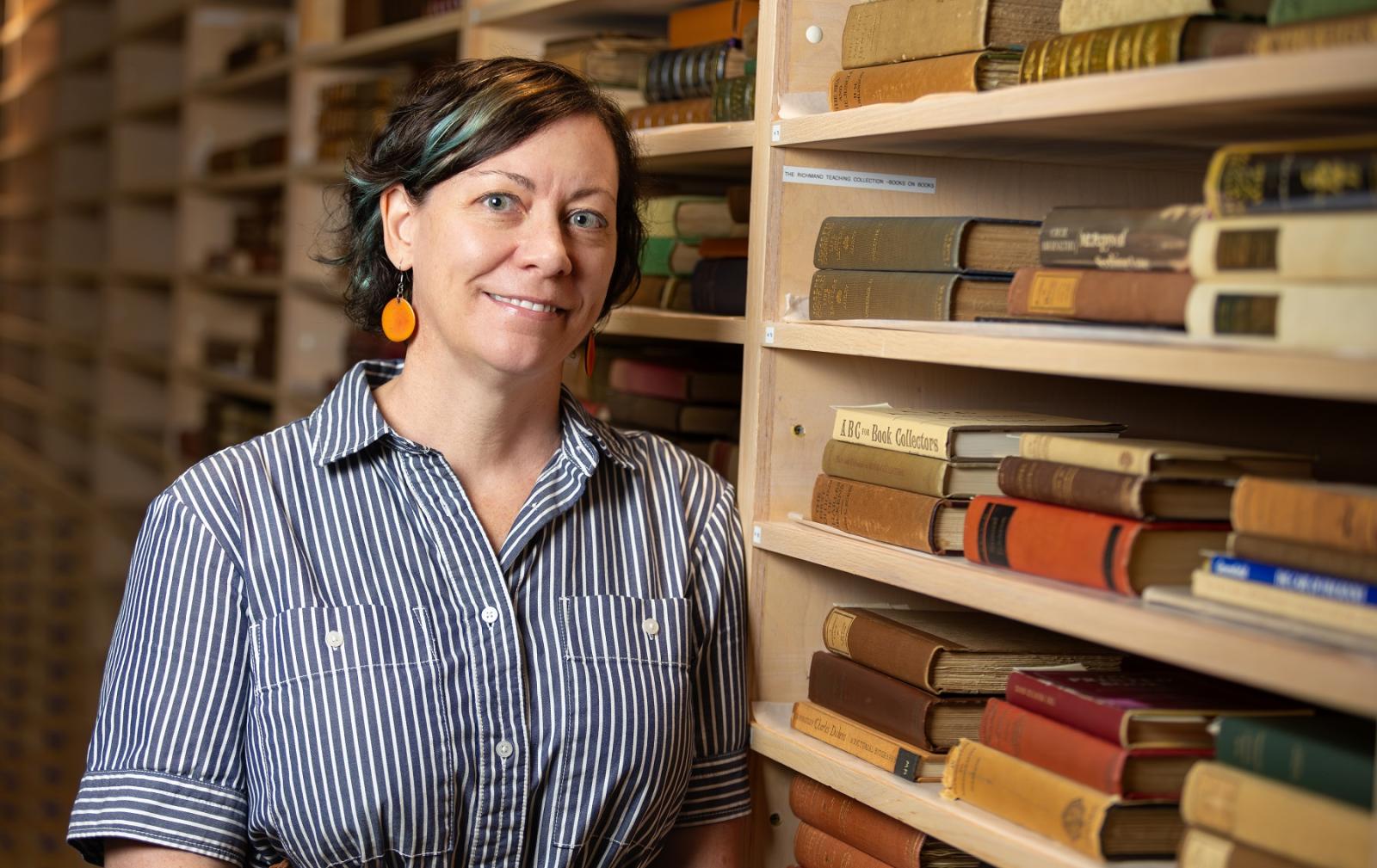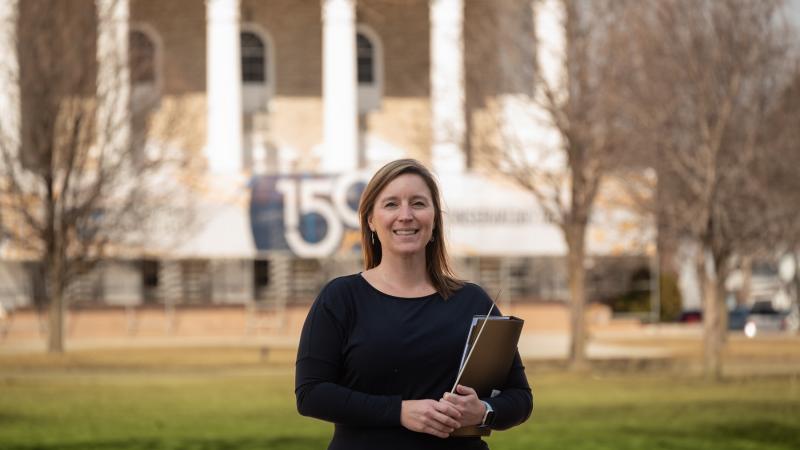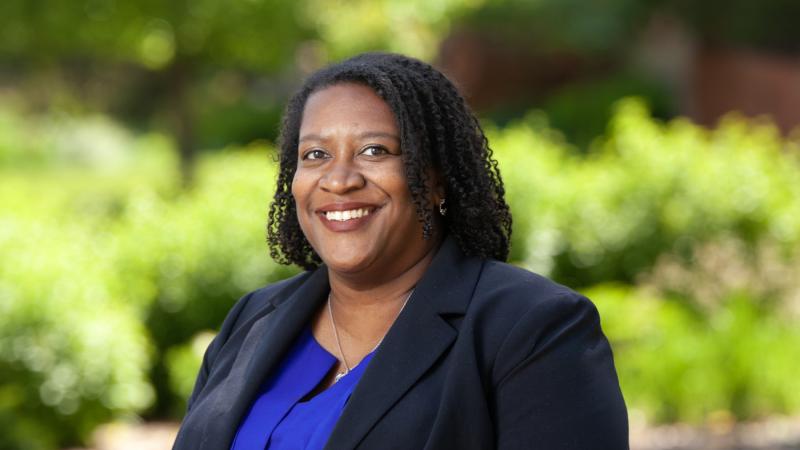Lawrence University recently welcomed the permanent addition of the Richmond Rare Book Collection. This highly prized assortment of valuable books and illuminated manuscripts has quickly become a highlight among the university’s resources.
It was initially loaned to Lawrence by Ann Nelson, a Milwaukee-Downer alumna from the class of 1941, explained Beth Zinsli, assistant professor of art history, curator of the Wriston Art Center Galleries, and director of the Museum Studies Interdisciplinary Area Program. Nelson’s daughter, Susan Goldsmith ’65, is a Lawrence alumna.
“There is a strong Lawrence-Milwaukee-Downer connection to the collection,” Zinsli said.
Nelson reached out to Lawrence in 2016 about the collection, which she received from family friends, the namesake bibliophiles Earl and Aubrey Richmond of La Crosse, Wisconsin. Initially on long-term loan to Lawrence, the collection was donated recently in memory of Ann Nelson by Susan and Richard N. Goldsmith ’64 and Eric Nelson.
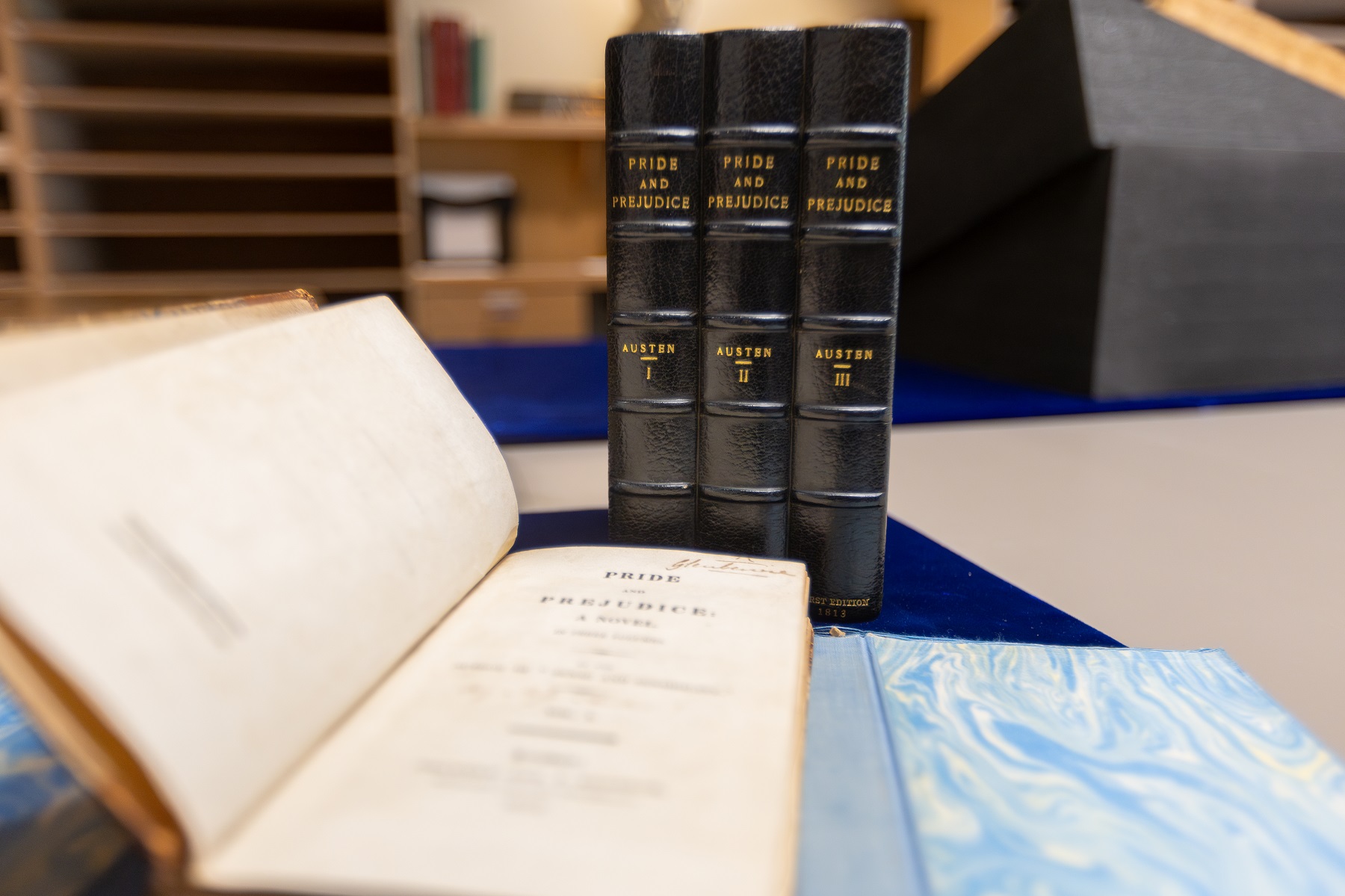
First editions of Jane Austen's Pride and Prejudice are in the Richmond collection.
Zinsli remembers the air of excitement amid the collection’s initial acquisition in 2016.
“Right when I heard, former Assistant Professor of Art History Ben Tilghman and I packed it up in boxes and drove it up to Appleton in a Penske truck,” she said.
But what exactly are these rare books and manuscripts? The official count numbers 228 books, two extensive illuminated manuscripts, along with a host of letters and other archival material from the Richmond brothers.
"The books are in good enough condition for students to handle, with proper support," Zinsli said. "They're here to be used, not just viewed."
The collection quickly became popular among faculty: its depth and variety make it an invaluable pedagogical resource.
“We immediately started connecting with faculty who might be interested in using the books in their classes,” Zinsli said. “Associate Professor of English Garth Bond was a natural first person because he teaches the History of the Book class, and then Associate Professor of English Celia Barnes because she teaches 18th-century topics.”
Barnes said she loves taking her students to see the books, especially the first editions of 18th-century texts.
“It’s so difficult sometimes to convince students that the texts in early-modern literature courses aren’t simply old, dusty, and—it pains me to say—boring,” Barnes said. “But I find that when I take my students to see the first editions of the very books we’re reading, they come away deeply moved.”
Barnes and Bond incorporated the books into their lesson plans, where they remain as curriculum staples. Other professors found different uses: Associate Professor of Art History Danielle Joyner brought students to investigate the authentic medieval manuscripts, while Associate Professor of Chemistry Allison Fleshman had classes conduct non-invasive chemical analysis.
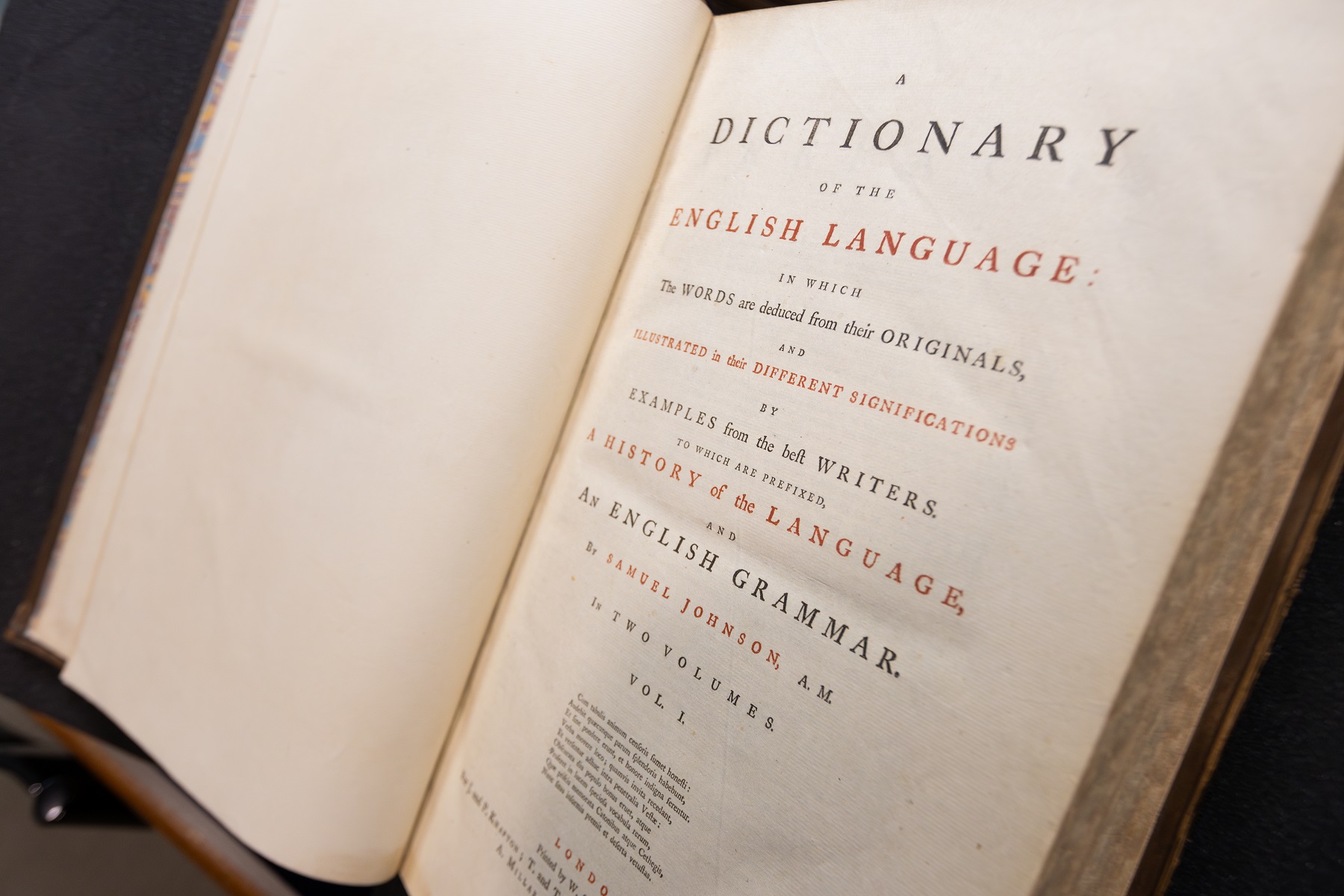
The Richmond collection includes a first edition printing of Samuel Johnson’s Dictionary of the English Language.
Highlights of the collection include a first edition printing of Samuel Johnson’s influential two-volume Dictionary of the English Language. It is often considered among the most outstanding scholarly achievements from the work of a single author.
“We did an event where we put Johnson's Dictionary out on view in the library and we turned one page of each volume every week,” Zinsli recalled. “Different faculty give short lunchtime presentations on a specific word. Associate Professor of Physics Megan Pickett presented on ‘Camelopard,’ which is what they called giraffes. It's just a really fun way to engage with the book.”
Other notable holdings include first editions of both James Boswell's Life of Samuel Johnson and Jane Austen's Pride and Prejudice. The collection also features a signed first edition of Laurence Sterne’s Tristram Shandy.
As one might expect, the Richmond brothers were voracious readers and avid collectors. Although others might focus on a specific author or genre that interests them, these brothers had particularly wide aspirations.
“They didn't collect any one specific author or any one specific time period,” Zinsli said.
Indeed, this immense breadth includes early editions of many literary luminaries, including Joseph Conrad, Charles Dickens, Rudyard Kipling, W. Somerset Maugham, and Herman Melville.
While the Richmond Collection will be housed in the Print Study Room in the Wriston Art Center, it will be cross cataloged in both the university's online art database and the Mudd Library's catalog, making it accessible to students, faculty, and the community.
Zinsli highlighted the importance of donations like this for Lawrence.
“We depend on the generosity of alumni and friends to provide these magnificent objects for our students,” she said.
With the Richmond Collection now a permanent part of the university, students and faculty have an opportunity to delve into the stories about and within these rare books.
“They're absolutely here to be utilized, to be part of Lawrence's educational mission,” Zinsli said.
